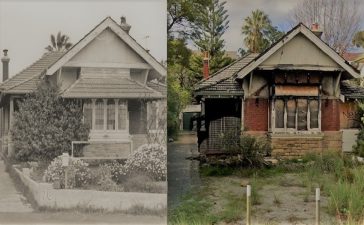Every comment is from a bot, every email is a potential threat and every phone call is a shake-down waiting to happen. Let’s face it; modern communication has failed.
It’s high time we walk things back to a place where we can stay connected without the risk of predation, and the boom in zine culture has given us the perfect segue into this better way of doing things.
We’ve spoken at length about the largely untapped potential of self-published zines and, when produced in a sustainable manner, their potential to usurp social media as a means of promotion. Now, with the release of Pulse #2, and the quite palpable buzz around it, we’re even more confident in this position.
Making its debut on the zine scene last year, Pulse focuses exclusively on the work of non-males in the scene so, naturally, they’ve got a hell of a lot to cover. Issue 2 features interviews with Alex Reade of Make Them Suffer, Amy McIntosh and Lizi Blanco of Vilify/The Beautiful Monument, Emma Boster of Dying Wish, Nikki Brumen of Blood Command, and a small crowd of industry pros.
A literal “bible for bad bitches in the scene“, Pulse taps into a tried and true format, immediately bypassing any algorithm fuckery to deliver well curated content to an audience who are quite frankly starved for it.
It’s simple to get your head around the basics of social media, just click and type – that’s kind of the whole problem with it. Zines however require far more work, and these extra steps can be fairly daunting – daunting enough to keep people from creating something truly great.
That’s why we reached out to Pulse creator Allison Watters to get some experienced input into to bring your zine dream to life.
1. Deep dive & find your style
Do your research and discover what parts of creation speak to you and which don’t. Find your voice, your craft style and get started. There is no one else who can speak on your experience, and if there is no one else creating what you want to say, then be the first; others will follow. I spent weeks researching media options and history of the culture before deciding on a zine. Whether it’s photocopied 4 page folded books, hand stitched, drawn, printed, informative, colour printing/black and white, whatever. Find the right format to say what you want and how you want that received. DIY can be laboursome, so once you have your format, think realistically about the creation stages, how it is achievable, and what can be outsourced or created with others.
2. Don’t delay!
The hardest lesson that I learnt was to not wait for the perfect day, or perfect mood to create. You can’t build on 0. But you’re never, ever going to know what you like until you make something you know you dislike. Figure out why you didn’t connect and keep narrowing the field. Don’t let fears of legitimacy or aesthetic stop you. As you change, your art will too… but only if you start!
Every time I got in my own head about my zine, I just told myself it didn’t need to ever go public. It could always just be for me! When you focus too much on reception or release, it’s easy to forget why you’re making it in the first place! 500 reasonable words / five mediocre pages are still closer to the finish line than never experimenting and starting each day at the beginning.
3. Stay local when you can
Keep your community in mind, but don’t let anyone tell you what to do. Zine culture is all about being loud and proud, honest, empowering your local community while sharing interests and information. Keep it as local as you can and don’t be afraid to DIY. Ask friends, collaborate. Get advertisers (these can be paid to balance the cost, or promotional to help with outreach) and find sponsors. Ask a fellow zine creator! Print can be costly and not always environmentally friendly so explore your options to stay true to the format you have chosen.
Some of my ideas for future issues of pulse are unprintable at commercial printers atm, so it’s months of stitching and glueing at home just to trial a new feature that may never be achievable. But what if it is? Why not try or phone a friend to experiment with you?
4. Shame-free creation
Don’t deny yourself the gift of expression because it’s not perfect … If you feel cringe (even thinking about it), good – that’s where you learn the most.
I started creating another zine in lockdown before Pulse, that focused on physical media friends and their chosen mediums. I did a bunch of interviews and the draft was all cut-outs from old tv guides, mixed VHS media and old Australiana magazines. It’s still a box of paper scraps, but it gave me the practice I needed when it came to interviews, creation and most importantly, confidence. For the longest time I thought it was a failure, but it was a step. Ditch the shame and live in the fantasy for a moment.
5. Keep the reader and crew in mind:
Accessibility and crediting are two super important yet majorly overlooked parts of print media. Font size, colour blind friendly design, readability, the list goes on … There’s heaps of accessibility kits and guides online, and get a friend to proofread with this in mind. Don’t forget about the space the spine consumes, think about your page borders and focus on how information is conveyed.
Almost every photographer in Australia can name an instance where their photo was used without permission. Mistakes do happen, but try to never forget those who make your creation possible and give credit where it’s due. Make any outsourced images, editing or design visible, and provide the means to follow their work. Respect goes a long way, and no one deserves to feel like their work is misused or unseen. This also goes for interviews, quotes or features. If you have guests, stay true to their message, don’t over edit or cut their components. Respect their story. Apologise for any unforeseen errors but always be open to suggestions or amendments from your team and artists involved; you included them for a reason.
6. Get started!
Sticky Institute in Melbourne run zine making workshops as well as having onsite zine services, printers and staff. They also run Festival of the Photocopier, a Zine Festival! The National Gallery of Victoria and the Museum of Contemporary Art in Sydney have zine exhibits currently, and so do most state libraries and the National Gallery. There is also a new ‘Zine Lounge’ Exhibit at the Old Parliament house in ACT. Heaps of record stores now stock local zines and local universities often allow discount printing for students.
Consider creating a digital zine for practice (Canva is a great free option compared to Adobe products), or even make a homemade zine for a friend to start. You can print with large scale printers like Mixam, or depending on scale/stock, print at home and make photocopies for distribution. Whether it’s for poetry, photography, essays, information, archival, about a band or even your favourite food; if you’re considering getting into zines: Start. Exploring. Now! There are no limits, and endless room for more creators!






